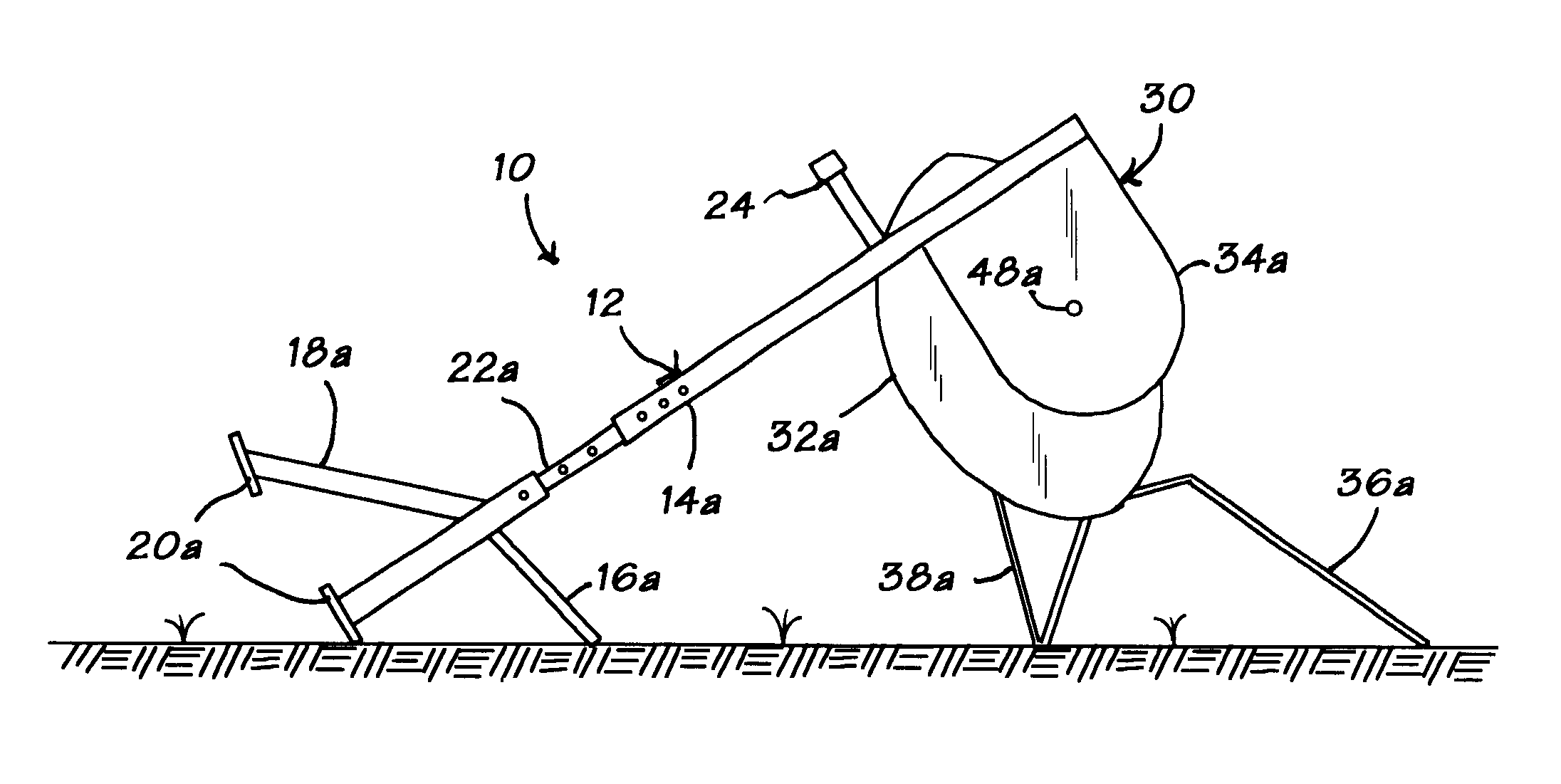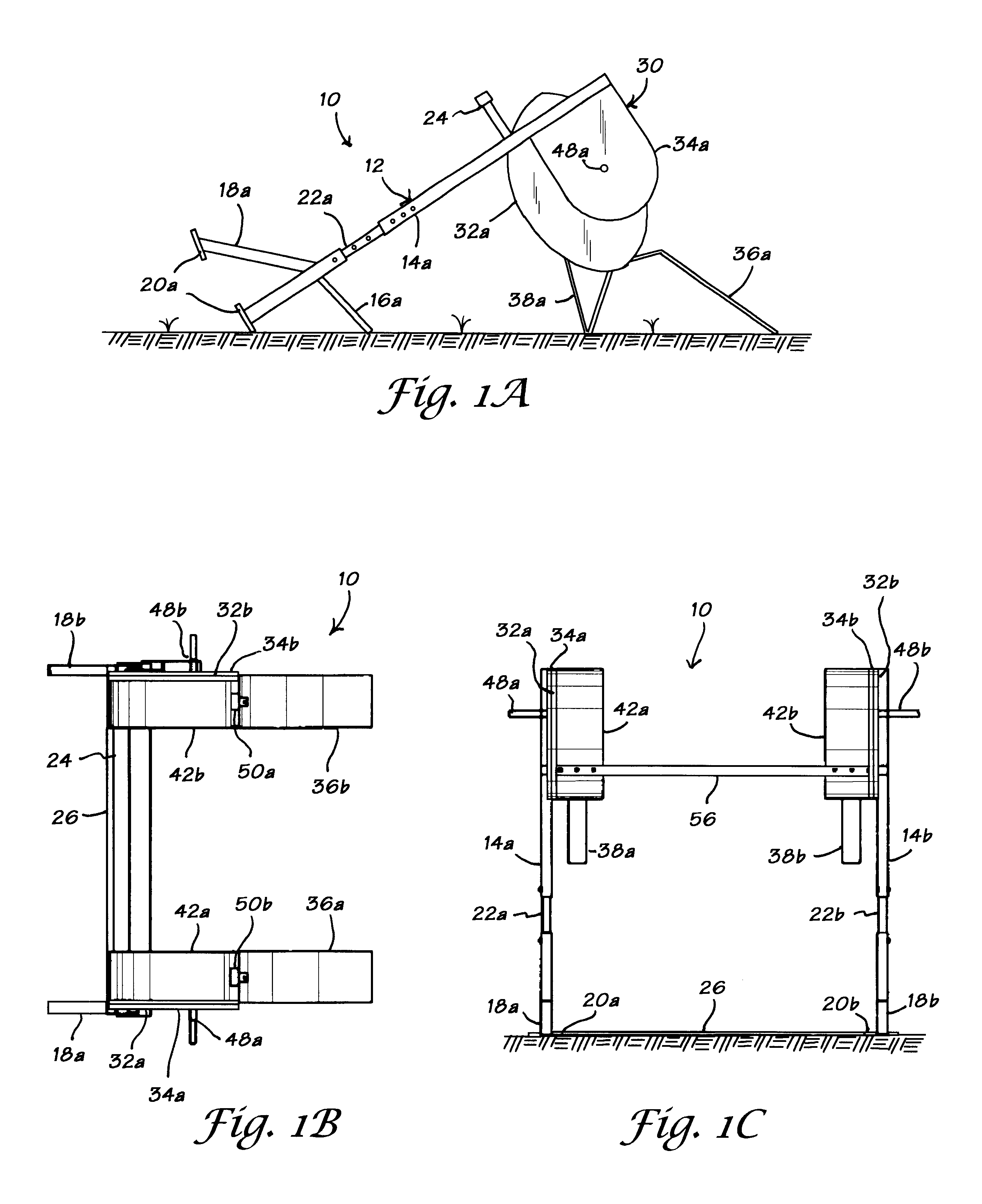Lifting apparatus for small vehicles
a technology for lifting apparatuses and small vehicles, applied in the direction of lifting devices, inclined ship lifting, construction, etc., can solve the problems of inconvenient use of conventional automobile jacks, the wrong tilt angle of ramps designed for use with automobiles, and the inability to lift into an elevated position unaided
- Summary
- Abstract
- Description
- Claims
- Application Information
AI Technical Summary
Benefits of technology
Problems solved by technology
Method used
Image
Examples
Embodiment Construction
An apparatus 10 was constructed of 1" (2.54 cm) and 11 / 4" (3.18 cm) square steel tubing having a wall thickness of 1 / 8" (0.32 cm). The weight of apparatus 10 was 93 lbs. (about 42 kg). The overall width of the apparatus was adjustable between 46"-53" (about 117-135 cm); the overall height was adjustable between a low setting of 36-1 / 4" (about 92 cm) and a high setting of 40-1 / 4" (about 102 cm). Ramps 36a, 36b and webs 34a, 34b were 6" (about 15 cm) wide; webs 52a, 52b were 8' (about 244 cm) long.
When the height of apparatus 10 was at the lowest setting, the apparatus could be operated to lift the forward end of a typical riding mower to a position where the front wheels were 20-1 / 2" (52 cm) above ground. When the height was adjusted to the highest setting, the front wheels were 24-1 / 2" (62 cm) above ground.
In operation, apparatus 10 is placed in the first stable position shown in FIGS. 1A and 3, with lift assembly 30 and cradles 34a, 34b in a first, "down" position. Ramps 36a, 36b r...
PUM
 Login to View More
Login to View More Abstract
Description
Claims
Application Information
 Login to View More
Login to View More - R&D
- Intellectual Property
- Life Sciences
- Materials
- Tech Scout
- Unparalleled Data Quality
- Higher Quality Content
- 60% Fewer Hallucinations
Browse by: Latest US Patents, China's latest patents, Technical Efficacy Thesaurus, Application Domain, Technology Topic, Popular Technical Reports.
© 2025 PatSnap. All rights reserved.Legal|Privacy policy|Modern Slavery Act Transparency Statement|Sitemap|About US| Contact US: help@patsnap.com



